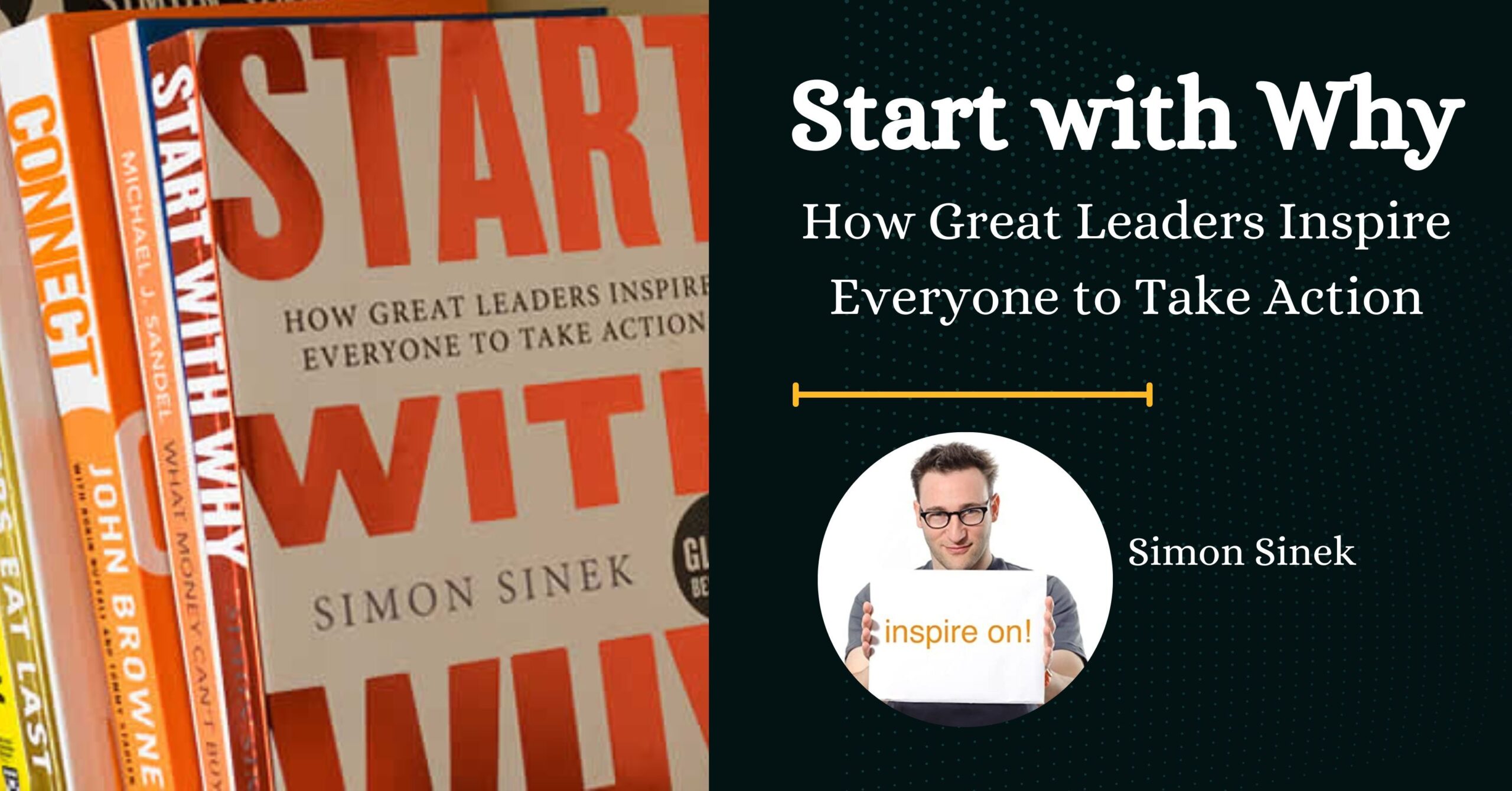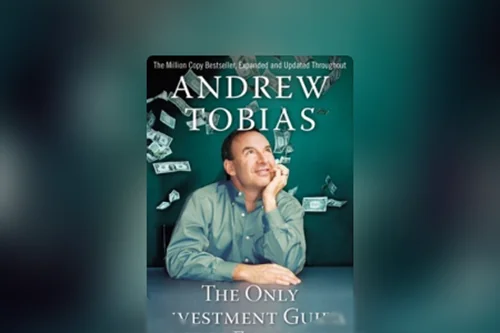Start With Why – Simon Sinek
We had our DCKAP Homecoming event at the Kaldan Samudhra resort at Mahabalipuram, Tamil Nadu. Our marketing team gifted me a book, Start with Why – by Simon Sinek. I was excited to receive the book from the team and started reading immediately.
This is the first book I am reading by Simon Sinek. The author writes some companies succeed and others don’t achieve massive success because they do not start with Why. ‘Companies like Apple, and Harley Davidson clearly communicate the Why?
Focussing on ‘Why’ not only makes it easy on the customers to make their purchase decision, but it also motivates the employees because they know the purpose and end goal. The author also quotes the examples of the Wright Brothers (who invented airplanes) and Martin Luther King.
Wright Brothers – Dayton, OH
In the early 1900’s Samuel Pierpont Langley set out to be the first man to man an airplane. He used to work at Harvard and his friends included Andrew Carnegie and Alexander Graham Bell. He also had grants/funding to achieve his mission. However, it was Wilbur and Orville Wright (Wright Brothers) from Dayton, Ohio who manned an airplane for the very first time and not Samuel. In spite of Samuel having all the connections, and funding, the Wright Brothers were able to achieve their dream. The reason for this is – they started with Why and they were also able to inspire their team.
There were a lot of people who worked on Civil Rights. However, Martin Luther King Jr. had a gift. He knew how to inspire people. He started with Why. All these leaders think, act, and communicate exactly alike. Inspired employees create stronger companies and stronger economies.
Carrots and Sticks
Marketing has become so convoluted that it has become hard for the consumer to decide what to buy. Take an example of a toothpaste company. There are thousands of toothpaste brands in the market. How do you decide? The author also talks about promotions. Sometimes you just lower the price and make customers buy. However, this does not last long. Simon quotes the example of General Motors which was selling cars. They offered a ton of rebates and discounts, but it eventually started hurting them. In such instances, you are not building the business for the long term. Companies that start with Why will have inspired employees and also build businesses for the long term.
Companies like Apple determine how an industry function. Apple dictated to the carriers how they need to function. They signed an exclusive deal with AT&T at the launch of the iPhone when other telecom companies declined.
Leadership is the ability to rally people not for a single event, but for years. Those whom we consider great leaders all have the ability to draw us close and to command our loyalty.
The author writes that very few companies can clearly articulate WHY they do, WHAT they do. Apple’s WHY challenges the status quo on how an industry operates (iTunes, a service that challenged the status quo of the music industry’s distribution model and was better suited to how individuals consumed music. You will see a pattern.
MP3 players
Apple did not invent the mp3 nor did they invent the technology that became iPod., yet they are credited with transforming the music industry. The multi-gigabyte portable hard drive was invented by Creative Technology Ltd. Singapore-based technology company. They advertised the technology as a 5GB mp3 player. Apple’s message was 1000 songs in your pocket.
Railroads
In the late 1800s the railroads were the biggest companies in the country. These companies were obsessed with WHAT they did instead of WHY. By the beginning of the 20th century, new technology was invented, ‘Airplanes’ – If the railroads have defined themselves as being in the mass transportation business, they would have transformed with change.
The need to belong is a basic human need and people will pay for it. People don’t buy WHAT you do, they buy WHY you do it. Great Leaders have the ability to see what most of us can’t see. They are good at giving us things that we never ask for. Great leaders start with WHY.
Tivo is also discussed in the book as being a commercial failure. This is because Tivo did not focus on the Why and they focused on what the product did.
Why and What partnership? Why are Visionaries? However, they cannot do it alone. They need assistance from people who know how to do it. Walt Disney dreamed. However, it was his brother (8 years older) – Roy Disney who executed. Martin Luther King championed a cause. Dr. Martin Luther King was a visionary, He knew how to communicate, and he got the message across. He had his own flaws. However, it did not let him deter from his vision. People did not gather for Martin Luther King. They came for themselves. It was their cause. They gathered for the cause. A leader’s job is to communicate well. Martin Luther King was great at communicating and he was able to inspire people. He also needed Ralph Abernathy, his one-time mentor, to help execute. It was Ralph who executed and told people what to do. Dr. King’s optimism and words that inspired a population. Bill Gates had Paul Allen and his Team. Steve Jobs (Visionary) had Steve Wozniak (able to execute).
People who have the Vision & ‘Why’ cannot do it alone. They need a team. Visionaries need to attract early adopters, then the early majority, and once some success is seen more people join the team. It is not just companies they run, it is a movement. Bill Gates- a computer in every home or eradicate malaria from the world). He keeps finding new Whys (eradicating malaria). A leader’s job is to come up with the vision and inspire people. However, he/she needs to attract a small set of people first and the number grows. People need to believe in the leader’s vision. A Leader also never assumes things based on what he/she sees. The author writes – Those who know Why, need those who know What. Great organizations function like social movement.
Megaphone: Even if a leader has a vision, the cause is great and more. The leader needs a megaphone to rally people. The leader needs to communicate to get the message across. The message should be loud and clear. The leader needs a megaphone and if they don’t the vision or the dream will be lost.
With a WHY clearly stated in an organization, it will be easy for people to make decisions. The author also writes that the biggest challenge for organizations is Success. As they become successful, they start focusing less on the why and start focusing on what. The author writes that when the organization is founder-led and small, the WHY is easier, however as the organization grows, the WHY needs to be communicated across. The communication needs to be clear. Also, when an organization moves from the Founder to the executives the Why is lost (Microsoft – From Bill Gates to Steve Balmer), Starbucks (The CEO Howard Schultz had to return back as CEO), Walmart (after Sam Walton, Walmart got into a lot of lawsuits) and more. The why starts to deplete. It is no accident that big companies talk about a return to the basics. Good Succession is the key. Southwest Airlines has been so successful in succession. At Walmart, Sam Walton never took a salary of more than $350,000 a year. At Costco James Sinegal (Co-Founder /Former CEO) drew $430,000 a year. -They also have stocks. Sam Walton also took care of his employees and they took care of the company.
Henry Ford’s quote: ‘If you think you can or you think you can’t you are right’. Simon Sinek also shares his story as an entrepreneur and the reason behind his success- he learned how to start with WHY.
One thing I did find different in this book was that some stories were repeated more than a few times. (e.g., Apple, Microsoft, Wright Brothers). To a reader, it sounds repetitive. Not sure if this was done on purpose.
Thanks Simon Sinek for writing a great book and inspiring us.




Leave a Reply